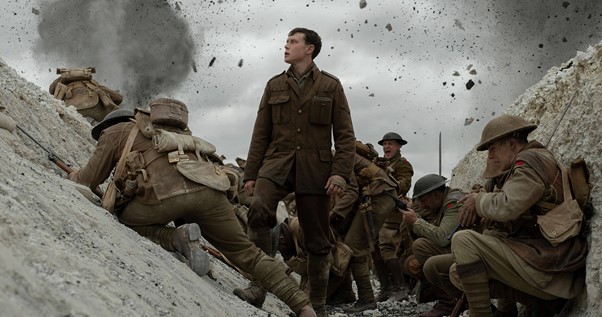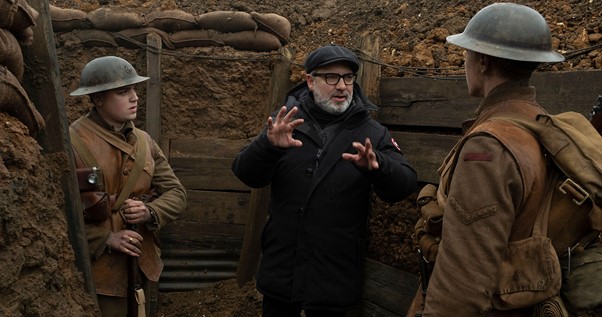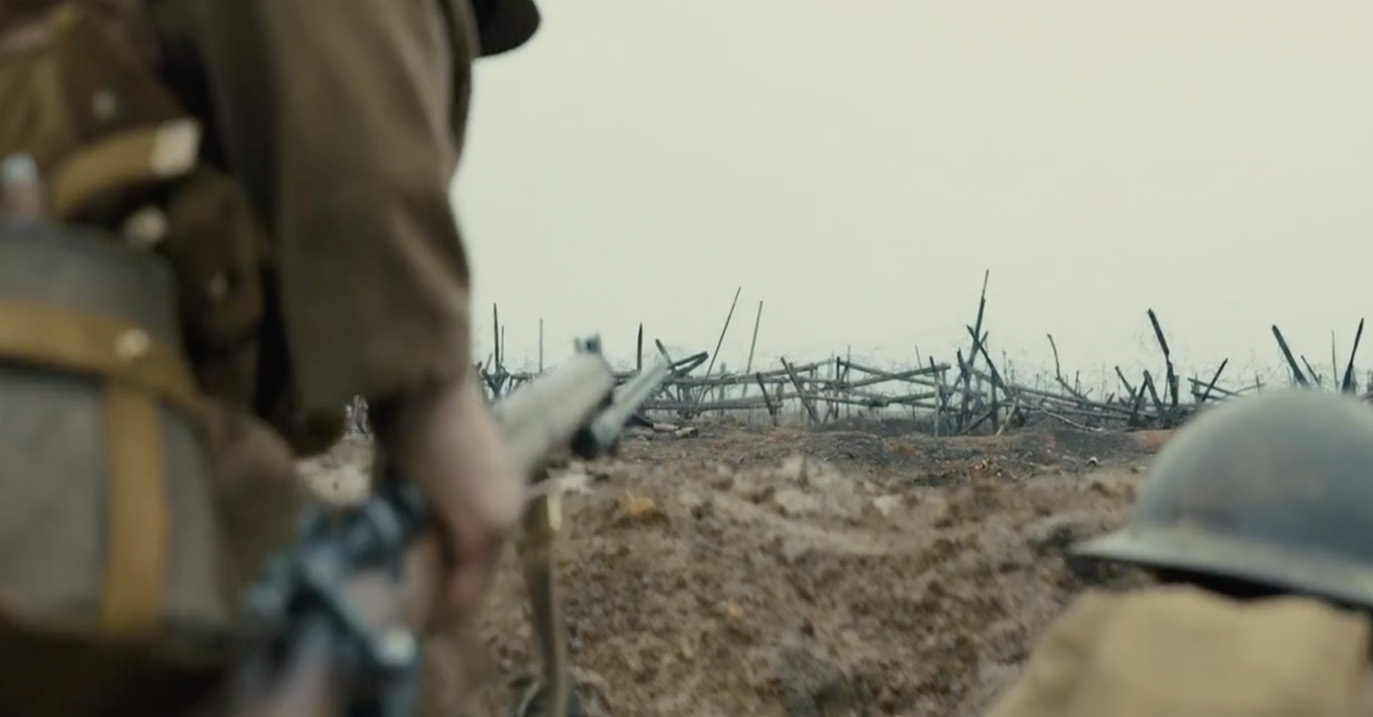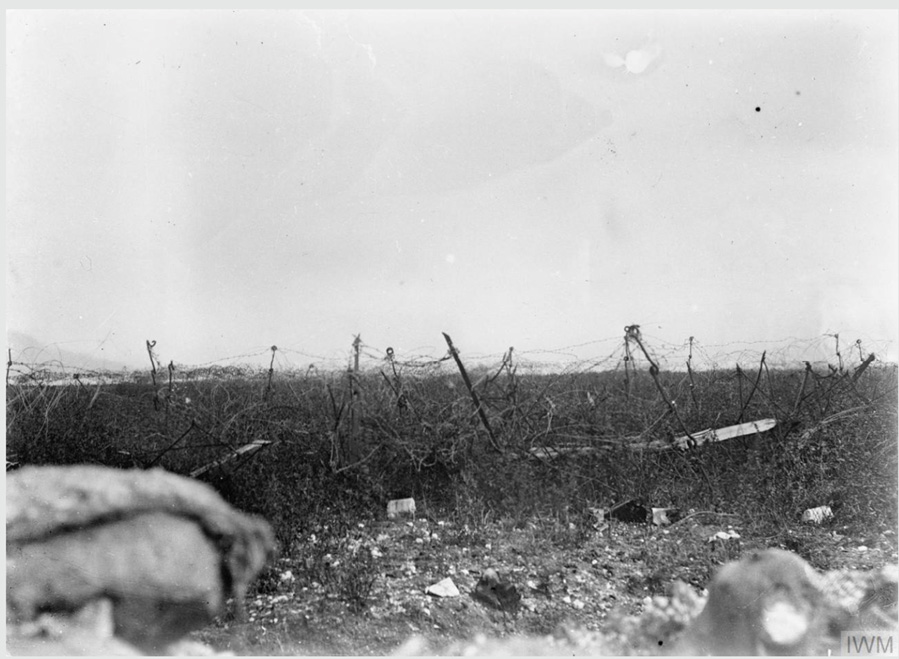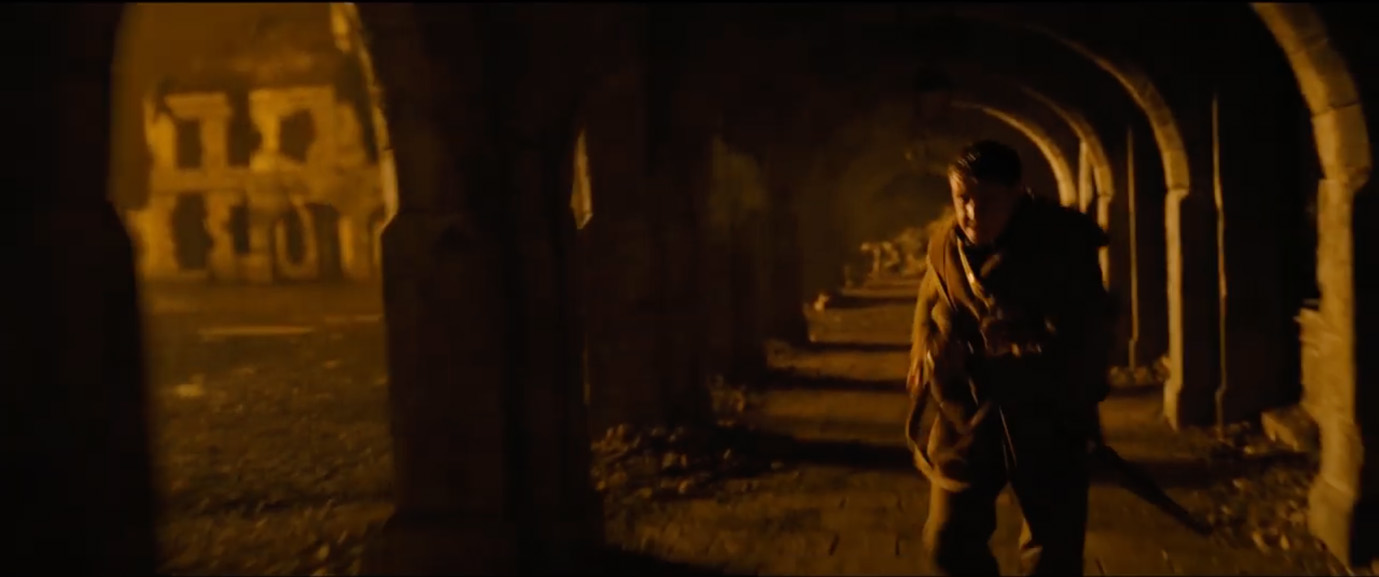| HOME | PRESENTACIÓN | ¿FILMAR LA HISTORIA? | DIRECCIÓN-REDACCIÓN | NÚMEROS PUBLICADOS | NORMAS DE PUBLICACIÓN | CONTACTOS | ENLACES |
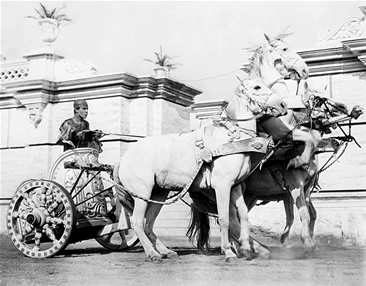 |
1917 (S. Mendes, 2019) Lcdo. John Robert Moffatt Recibido el 4 de Marzo de 2021
Abstract. In 1917 (2019) by Sam Mendes, Lance Corporals Blake and Schofield are charged with delivering an urgent set of orders that warn Colonel Mackenzie of a German trap to prevent the massacre of 1,600 soldiers, amongst them Blake’s brother. The viewer accompanies Blake and Schofield on an immersive journey through the trenches, across no man’s land, and into the war-torn landscapes of the Western Front of the First World War. In this article, we study the film and its historical context by analysing the plot, setting, and characters. In doing so, we evaluate the impact of Mendes’s filmmaking decisions on how the viewer experiences and interprets the grim realities of everyday life on the Western Front in this modern war classic. Resumen. En 1917 (2019) de Sam Mendes, los cabos Blake y Schofield son mandados a entregar unas órdenes que advierten al coronel Mackenzie de una trampa de los alemanes y así prevenir la masacre de 1.600 soldados, entre ellos el hermano de Blake. El espectador acompaña a Blake y Schofield en un viaje a través de las trincheras, la tierra de nadie y el paisaje devastado del Frente Occidental en la Primera Guerra Mundial. En este artículo, estudiamos la película y su contexto histórico, analizando la trama, el escenario y los personajes. De esta manera, evaluamos el impacto que tienen las decisiones filmográficas de Mendes sobre cómo el espectador experimenta e interpreta las duras realidades de la vida cotidiana en el Frente Occidental en este clásico moderno del cine bélico. .
1917 (2019) by Sam Mendes is the most recent entry into the catalogue of films that take the viewer to the Western Front of the First World War. The film was shown at cinemas for the first time in December 2019 during a limited release, before screening more widely in January 2020. Upon release 1917 received very positive reviews in general from critics who praised the strong visuals, sound effects and acting, along with the ways in which Mendes and cinematographer Roger Deakins were able to use technology to present the film as two long continuous sequences. For instance, Todd McCarthy of The Hollywood Reporter considers 1917 to be “a protean display of virtuoso filmmaking” (25/12/2019) and Johnny Oleksinski of the New York Post regards the film as “a modern war classic” (25/11/2019). The technical triumph of 1917 is further reflected in the three Oscars that the film later won for cinematography, visual effects and sound mixing, along with two Golden Globes and seven BAFTA awards. Meanwhile, the commercial success of 1917, which had a production budget of $95,000,000 and made $384,876,340 worldwide gross (IMDB, 2021) despite the impact of the COVID-19 pandemic, is testimony to the popularity, reach and influence of historical film today. The aim of this article is to offer the reader an overview of this modern war epic, whilst also highlighting key areas of analysis for further study. We begin by situating 1917 within its historical context, before exploring the plot, setting and characters of the film. Then, we conclude by reflecting on the purpose and role of 1917 one hundred years after the events of the First World War. The First World War broke out on the 28th of July 1914 and so began the first phase of the conflict known as the War of Movement, during which the German army advanced quickly through France until they were halted at the River Marne in September, just several kilometres east of Paris. Here the opposing forces dug trenches and fortified defensive lines that ran parallel for over 750 kilometres from the Swiss Border to the English Channel. This became known as the Western Front where trench warfare was practised during the War of Attrition, a phase of the war that would come to symbolise the entire conflict. For Eric Hobsbawm the Western Front would perhaps become the deadliest war machine that the world had known (2013, p. 33). Indeed, in 1916 the longest and bloodiest battles of the War of Attrition took place: The Battle of Verdun and the Battle of the Somme, respectively. During the Battle of Verdun (February 1916 – December 1916) more than 300,000 combatants were killed, whilst more than 600.000 soldiers lost their lives during the Battle of the Somme in November 1916 (Ruiz Franco, 2017, pp. 50-1). Paul Von Hindenburg, who had recently been appointed as Chief of the Great General Staff and Supreme War Commander of the Central Powers, now recognised the precarious situation of the German army on the Western Front as a result of the large number of casualties that they had suffered during these battles. Therefore, he ordered the strategic withdrawal of the German army to the Hindenburg Line between February and the end of March 1917. Since this line was more heavily fortified and narrower, it was easier to defend with less divisions. This withdrawal, known as Operation Alberich, was followed by the Battle of Arras, a British offensive that led to the most significant advance by the allies in over two years of fighting. The Battle of Arras took place between the 9th of April and the 16th of May, but was preceded by intense artillery bombardment in the sector. The fictitious story of 1917 takes place between the 6th and 7th of April 1917 on the Western Front to the north of Bapaume, France. Thus, the plot takes place amidst the War of Attrition, between the strategic withdrawal of Operation Alberich and the Battle of Arras. What’s more, the 6th of April is not chosen at random, but rather coincides with the date that the United States declared war on the German Empire. Consequently, we can say that 1917 takes place during a decisive moment in the development of the First World War.
Inspired by the experiences of Mendes’s grandfather on the Western Front, 1917 follows two British soldiers, Lance Corporals Blake (Dean-Charles Chapman) and Schofield (George MacKay), who are tasked with delivering an urgent set of orders to call off an attack that will take place the following morning. Colonel Mackenzie (Benedict Cumberbatch) believes that by pursuing the fleeing Germans now he can break their lines and change the tide of the war. However, he is mistaken. The Germans are in fact strategically withdrawing to a more heavily fortified line, which if attacked will lead to the massacre of 1,600 British soldiers, including Blake’s brother. After a quick briefing from General Erinmore (Colin Firth), the two set off on a journey that will take them through the trenches, across no man’s land and into the war-torn landscapes of the Western Front. Although the plot of 1917 is straightforward, it is nevertheless engaging due to the heightened sense of immersion and danger that Mendes is able to achieve. The two-take structure of the film, together with the floating camera that literally follows the protagonists throughout their journey has been widely praised by film critics for adding to the immersive experience of the audience. Indeed, even though the viewer does not influence the events of 1917, these techniques transport us to the Western Front in order to share the experiences of these soldiers. It is this central aim that explains the single cut halfway through the film when Schofield is knocked unconscious because Mendes and his team are careful to ensure that the viewer perceives the events from the perspectives of Blake and Schofield, and is not privy to any information that is unknown to the protagonists. For example, the viewer is not provided with translations of the German that is written on the signs inside the German trenches, or of the German and French spoken by the German Pilot or the Young French Woman, respectively. Similarly, as Schofield makes his way through Écoust-Saint-Mein he is shot at from unseen snipers hiding off-screen in the night’s darkness. These filmmaking decisions all add to the levels of tension and immersion, as well as render the viewer vulnerable, thereby making it easier to accept the “fundamental fiction” (Rosenstone, 1995, p. 3) of historical film, suspend reality and allow ourselves to experience another time and place. However, Mendes’s focus in 1917 is not limited to conveying the experiences and everyday realities of its protagonists. For example, in the opening minutes of the film Blake and Schofield follow their sergeant and discuss food and mail from home. However, the viewer’s eyes are drawn to the ever-busier scene that fills the background and depicts all manner of everyday activities. Here, we find soldiers who are: sleeping, sitting, talking, eating, smoking, reading mail, washing clothes with laundry possers and dolly tubs, hanging clothes out to dry, having their hair cut, cooking, washing up plates, moving equipment, handling mail, and even playing cards. Similarly, once inside the trenches we travel past soldiers who are performing tasks that in the context of the Western Front became everyday activities, such as fixing telephone cables, being on sentry duty, using periscopes to look out over no man’s land, and repairing areas of the trenches that had been destroyed by artillery fire. Everyday life is also communicated to the viewer through the interactions between characters. For example, Lieutenant Leslie (Andrew Scott), tells Blake and Schofield how an officer and three men were killed two nights earlier whilst repairing holes in the barbed wire, and the soldiers in the convoy make fun of their commanding officer and laugh about a prank that they had committed. In this way, along with 1917’s central plot, the film simultaneously tells us the story of how people lived and experienced life together on the Western front.
The landscapes of 1917 have been carefully reconstructed in order to maintain the sense of immersion and accurately reflect the historical reality. For example, the trench system in 1917 is largely accurate, consisting of the front line, support trenches and reserve trenches. According to one of the veterans in They Shall Not Grow Old (2018), Peter Jackson’s film documentary, the trench system was a labyrinth in which one could lose oneself very easily. Consequently, signs were constructed in order to guide and instruct the soldiers as they moved through the trenches. In 1917, we not only find signposts that direct soldiers, but also those that warn them about enemy snipers and of the need to “Keep your head down in daylight”. What’s more, the German trenches in 1917 have large underground barracks that reflect the fact that these trenches were more sophisticated than the British trenches, leading Blake to comment, “Even their rats are bigger than ours”. Behind the German trenches Blake and Schofield also find an artillery battery, which in reality would likely have been situated further from the trench lines, but this use of artistic licence can be understood here given the lack of scene changes in 1917. Similarly, the representations of no man’s land are horrifyingly realistic. The spectator follows Blake and Schofield on tenterhooks as they move slowly and cautiously across the shortest span of no man’s land, passing through rows of barbed wire, blasted trees and craters. During the day, the pale white, empty sky contrasts with the wet, earthy browns, and reflects the weather of April 1917, which according to John Keegan, consisted of “rain alternating with snow and sleet” (2014, p. 351). This representation of the sky can also be interpreted as being inspired by the photography of the First World War, which was shot in grayscale. The abandoned tank, a recent scientific invention, appears stranded in one crater, symbolising the danger of the wet earth. Indeed, the testimonies of veterans in They Shall Not Grow Old confirm this threat and even tell of men drowning in the mud. We also see the disturbing images of rotten bodies, half-buried faces and fallen soldiers suspended amongst the barbed wire. These representations do not glorify the deaths of these soldiers, but rather evoke the words of trench poet Wilfred Owen (2015: pp. 2-3) when he criticises the old lie Dulce et decorum est pro patria mori.
Beyond the trenches in 1917 we find representations of how the First World War also impacted upon civilian lives. For example, as Schofield regains consciousness and sets out to cross through Écoust-Saint-Mein, we see the eerie yet beautiful image of the ruined town at night, illuminated by a distant fire and the flares that fly overhead. The Night Window score by Thomas Newman accompanies this scene and adds to the sense of mystery and wonder. The viewer, like Schofield, is mesmerised by the view and this fascination is only broken by the sound of a gunshot. As we make our way through Écoust-Saint-Mein we pass by a poster advertising a travelling circus, a shop and a restaurant that have been destroyed, as well as a town square where a majestic religious building is burning. With its arched terrace spaces around the perimeter this town square bears resemblance to that of the nearby city of Arras. Therefore, as well as representing the church of Écoust-Saint-Mein, it is possible that the burning building symbolises the Cathedral of Arras, which was heavily damaged by shelling in April 1917 (G. J. Meyer, 2006, pp. 459-60). In other circumstances, the circus poster, shop, restaurant or café, and town square with a church would highlight a pleasant French town, but here these symbols are used to show how the First World War has destroyed the socio-cultural, commercial and religious lives of the civilian population. In order to hide from a pursuing German soldier Schofield enters the basement of a building where he meets the Young French Woman and a Baby Girl that she is caring for. This is an emotional scene, which is only fully understood at the end of the film when it is revealed that Schofield is married and has two young girls. The identity and whereabouts of the Baby Girl’s parents are unknown. They have either been forced into hiding or have been killed in the conflict. This second possibility becomes more of a reality when Schofield escapes the town by jumping off a bridge into the river and then has to swim through the bodies of civilian men, women and children to exit the river further downstream. These scenes, together with those of the abandoned farmstead, make clear the extent to which the conflict has devastated civilian and family life on the Western Front.
A key recurring symbol in the landscapes of 1917 is the tree. In his film review Jeremy Layton (30/01/2020) recognises this when he writes, “Trees are an important symbol in 1917” and argues that “They only appear at moments of peace: in the opening scene when the characters don’t yet know their mission, just before the climax when the soldier sings the pre-battle song, and at the end once the attack is called off and hundreds of lives have been saved”. In fact, trees do appear on more occasions but it is true that healthy trees generally appear at more peaceful moments in the film. This is because the tree is a very clear symbol of the natural destruction caused by the war. In no man’s land the trees are little more than splintered stumps, the cherry trees at the farmstead have been felled by the retreating Germans, whilst other trees have been chopped down and used as road blocks to slow down the advancing allies. These are landscapes that have been destroyed by war. By contrast, the opening scene where Schofield is sleeping at a tree, the scene in the woods where soldiers rest and listen to the song I am a Poor Wayfaring Stranger, along with the final scene that mirrors the opening one and in which Schofield sits by a tree to look at photos of his family, all take place in spaces where nature remains untouched by war. In this way, contact with nature becomes a physical means of distancing oneself from the terrible reality of war. The memory of natural landscapes may also be a form of escapism for these soldiers, since they were spaces that were frequently visited for picnics, explored and enjoyed with family and friends in Pre-War Edwardian Britain. For example, Hurt Wood provides the peaceful opening setting for Rose Macaulay’s poem Picnic written in July 1917. She speaks of how they would lay and eat hurt-berries amongst the dark pines, with the wild greenery of the Surrey Hills in the background, before going on to describe the Western Front (George Walter, 2006, pp. 197-9). Similarly, in R. C. Sherriff’s play Journey’s End Raleigh recalls his adventures with schoolfriends in the New Forest, whilst Osborne talks of discovering Roman relics in the woods at the base of Bignor Hill as a means of distracting themselves before they go to carry out a raid (1929, pp. 92-3). In 1917 the felled cherry trees at the farmstead lead Blake to reminisce about the times that he would pick cherries with his brother in their family’s orchard before the war. The characters of 1917 have a variety of personalities and express a range of views and beliefs about the war. Blake is the younger of the two protagonists and is described by Schofield as “…a good man. Always telling funny stories”. Indeed, on many occasions Blake makes light of serious or difficult situations by telling a joke. Blake is determined to find his brother, but this determination coupled with his lack of experience can make him reckless, which at times frustrates the more level-headed Schofield, who is slightly older, but wiser and more wary of the dangers that lay ahead of them. This is explained largely by the fact that Schofield has more responsibilities back at home since he is married and has two young girls, but also because he is more experienced. Schofield had earned a medal, but traded it with a French Captain for some wine. Blake cannot understand why, but for Schofield it was just a piece of tin. Schofield’s concern is not about winning glory or medals, but surviving the war and making it home to be with his family. General Erinmore is a well-spoken member of the top brass who draws on his readings of Rudyard Kipling to explain his decision to send Blake and Schofield alone, “Down to Gehenna or up to the Throne, He travels the fastest who travels alone”, before seeking affirmation from a fellow officer. Whilst Blake believes that the Germans have withdrawn as the General says, Schofield is more cautious, asking why, if that is the case, have they been given grenades? Schofield also remarks that the General has never even seen no man’s land before, thereby alluding to the differences in how soldiers and high-ranking officers experienced the Western Front. In contrast, Lieutenant Leslie is sceptical, mocking, and truly fed up with the war. Although he is right to think that the Germans are setting a trap, the recent loss of his commanding officer to German shelling a few nights back, as well as that of other men who were shot at whilst fixing barbed wire, mean that he cannot accept that the Germans have left their trenches. His disillusion with the fighting is highlighted when he sarcastically comments to Schofield, “But, chin up. There’s a medal in it for sure. Nothing like a scrap of ribbon to cheer up a widow”. Lieutenant Leslie amuses himself by performing an extreme unction on Blake and Schofield, splashing each with whisky from his flask and saying the words, “Through this holy unction may the Lord pardon thee whatever sins or faults thou hast committed”. It is clear to Lieutenant Leslie then that both Blake and Schofield are insane and that they are certainly going to their death. He bids them farewell with a jolly, but markedly sarcastic, “Cheerio”. Captain Smith (Mark Strong) is perhaps the most compassionate of the officers in 1917, helping Schofield after the death of Blake and consoling him by speaking from experience, “I’m sorry about your friend. May I tell you something that you probably already know? It doesn’t do to dwell on it”. He also provides Schofield with some important advice, “If you do manage to get to Colonel Mackenzie, make sure there are witnesses… I know (that they are direct orders from the General). But some men just want the fight”. Indeed, Colonel Mackenzie refuses at first to read the letter when Schofield arrives and perhaps only agrees to finally read it because other officers are present, including Major Hepburn (Adrian Scarborough). Colonel Mackenzie, frustrated by Army Command for changing their orders and that this is not going to be the moment that they change the tide of the war, believes, “There is only one way this war ends. Last man standing”. Thus, the film’s characters express disillusionment with the war and frustration that it is not yet over, whilst the general mood of 1917 reaffirms A. J. P. Taylor’s assertion that “Idealism perished on the Somme” (1966, p. 140). One hundred years after the end of the First World War, the intent behind 1917 very much corresponds with the recent trends in historiography and its focus on the everyday lives, beliefs and emotions of ordinary people. Mendes’s filmdoes not seek to attribute blame for the causes of the war, as historians did during the interwar period, but rather concentrates on interpreting the personal experiences of those living on the Western Front. This attention to the individual and to the personal explains why the declaration of war by the United States on the German Empire on the 6th of April receives no attention during the film, despite this being a political and diplomatic event that was pivotal to the outcome of the conflict. Instead, we find representations of how ordinary people lived during this extraordinary time: what their everyday lives involved, how the conditions were in which they lived, and how they coped emotionally and responded differently to the experiences they faced. Following the centenary of the end of the First World War, 1917 is an account of all those who endured the grim realities of life on the Western Front and serves as a poignant reminder of the consequences of war.
Filmography They Shall Not Grow Old (P. Jackson, 2018). 1917 (S. Mendes, 2019).
Bibliography HOBSBAWM E., Historia del siglo XX 1914-1991, Crítica, Barcelona, 2013. IMDB, 1917 (2019), 2021. KEEGAN J., The First World War, The Bodley Head, London, 2014. LAYTON J., 1917’s Ending Explained, 30/01/2020. MCCARTHY T., “1917”: Film Review, 25/12/2019. MEYER G.J., A World Undone: The Story of the Great War, 1914-1918, Delacorte Press, New York, NY, 2006. OLEKSINSKI J., “1917” review: A new war movie classic, 25/11/2019. OWEN W., Anthem for Doomed Youth, Penguin Books, London, 2015. ROSENSTONE R. A., ‘The Historical Film as Real History’, Film-Historia, Vol. V, No.1, 1995, originally pp. 5-23, but here pp. 1-12. RUIZ FRANCO R., Las guerras mundiales en sus contextos históricos, Paraninfo, Madrid, 2017. SHERRIFF R C., Journey’s End, The Camelot Press Ltd., London, 1929. TAYLOR A.J.P., The First World War: An Illustrated History, Penguin Books, London, 1966.
ISSN 1988-8848
|
